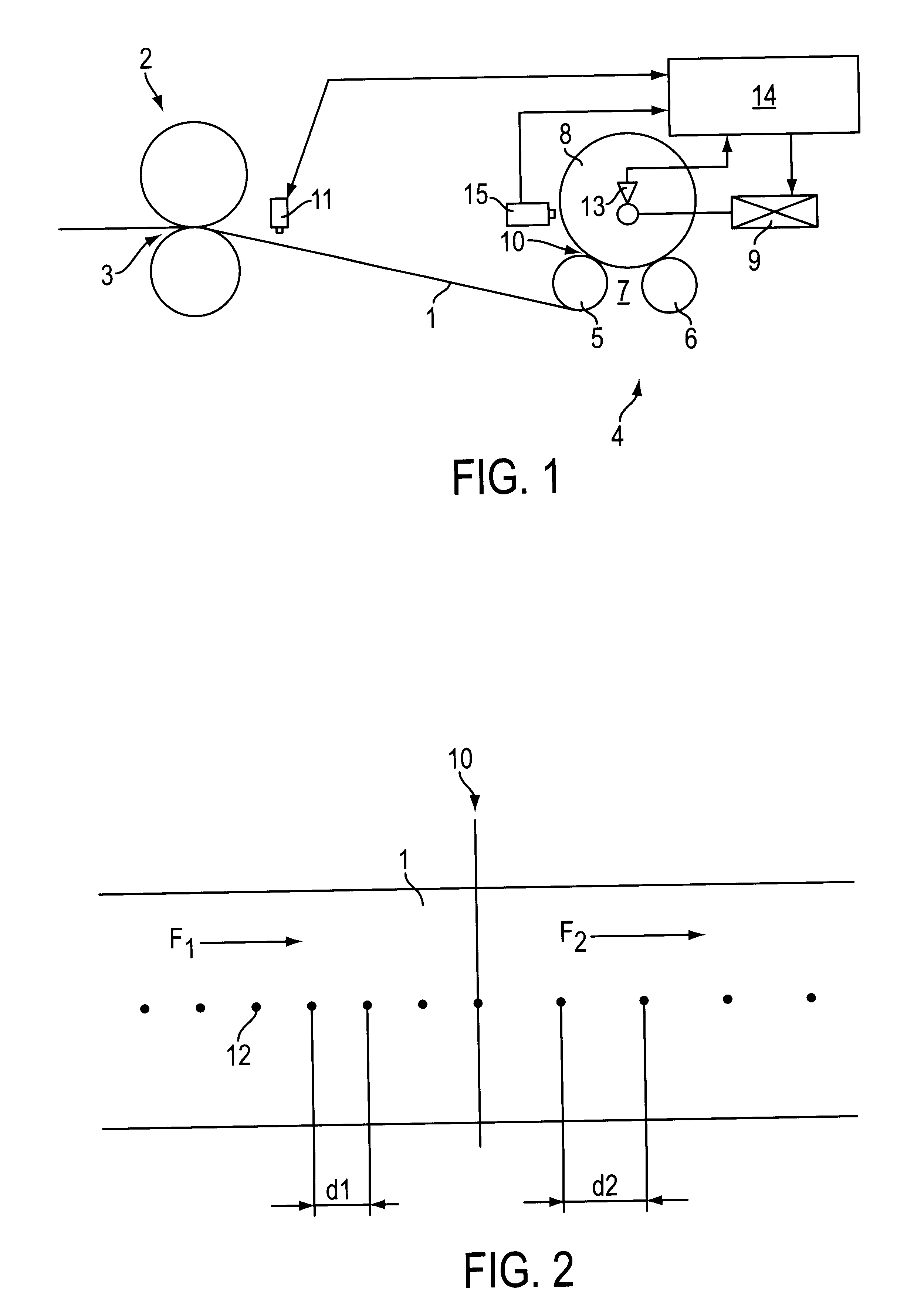Method and apparatus for monitoring a winding hardness of a winding roll
a winding roll and hardness technology, applied in the field of methods and apparatus for monitoring can solve the problems of reducing the measurement work, difficult to actually determine the winding roll hardness during the winding operation, and generally not practicable to employ a physical contact devi
- Summary
- Abstract
- Description
- Claims
- Application Information
AI Technical Summary
Benefits of technology
Problems solved by technology
Method used
Image
Examples
Embodiment Construction
The particulars shown herein are by way of an example and for purposes of illustrative discussion of the present invention only and are presented in the course of providing what is believed to be the most useful and readily understood description of the principles and conceptual aspects of the present invention. In this regard, no attempt is made to show structural details of the present invention in more detail than is necessary for the fundamental understanding of the instant invention, the description taken with the drawings making apparent to those skilled in the art how the several forms of the present invention may be embodied in practice.
As shown in FIG. 1, material web 1 passes through a guide arrangement 2, formed by a pair of rollers 2a and 2b. A first nip (or gap) 3 is located between the pair of rollers and guides the material web 1 towards a winding station 4. The winding station 4 comprises a first king roll 5 and a second king roll 6 that form a winding bed 7, in whic...
PUM
 Login to View More
Login to View More Abstract
Description
Claims
Application Information
 Login to View More
Login to View More - R&D
- Intellectual Property
- Life Sciences
- Materials
- Tech Scout
- Unparalleled Data Quality
- Higher Quality Content
- 60% Fewer Hallucinations
Browse by: Latest US Patents, China's latest patents, Technical Efficacy Thesaurus, Application Domain, Technology Topic, Popular Technical Reports.
© 2025 PatSnap. All rights reserved.Legal|Privacy policy|Modern Slavery Act Transparency Statement|Sitemap|About US| Contact US: help@patsnap.com


